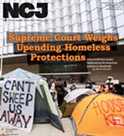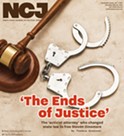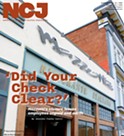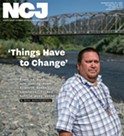Do You Recall?
A quick primer on next month's election and how to cast your vote
By Byrhonda Lyons/Calmatters[
{
"name": "Top Stories Video Pair",
"insertPoint": "7",
"component": "17087298",
"parentWrapperClass": "fdn-ads-inline-content-block",
"requiredCountToDisplay": "1"
}
]
To keep Gov. Gavin Newsom or not to keep Gov. Newsom? That is the question.
Upset by the progressive governor's policies, his handling of the pandemic and his infamous maskless dinner at the French Laundry, about 12 percent of the number of Californians who voted in the last election for governor signed petitions to force a recall election.
Newsom, who served as the mayor of San Francisco from 2004 through 2011 before becoming lieutenant governor in 2011, beat a wide swath of Democrat candidates in the 2018 primary before being elected governor with 62 percent of the vote over Republican candidate John Cox, who is once again seeking the office.
Newsom took office in 2019 with an approval rating of 43 percent, according to the Public Policy Institute of California (PPIC) and the number has since risen. In January of 2020, before the pandemic hit California, Newsom was polling at 49 percent, according to the PPIC, and his approval rating twice surpassed 60 percent after COVID-19 struck the state. In January of this year, the PPIC poll had 52 percent of California voters approving of the governor's job performance.
But recall efforts are commonplace, if unsuccessful, in California politics — with every governor in the state since 1960 facing at least one, but only the 2003 push to oust Gov. Gray Davis succeeded. Newsom himself faced five unsuccessful recall petition efforts before a sixth pushed by the California Patriot Coalition caught on amid pandemic lockdowns of schools and businesses in 2020, ultimately gathering the signatures of more than 1.7 million voters.
Now, on Sept. 14, registered voters will decide if the governor holds onto his job or not.
All active registered voters in California get their ballots in the mail about a month before the election.
The Newsom recall vote is a two-fer, asking voters:
Should Newsom be removed?
Who should replace him?
If you want Newsom to stay in office, vote no.
If you want to remove Newsom, vote yes.
Either way, you can vote for a candidate on the second question, or skip it.
If more than half of voters opt to replace Newsom, whoever has the most votes among the replacement candidates will be sworn in as the new governor in late October — even if that person doesn't get a majority, and even if that person gets fewer votes than those cast for Newsom on Question No. 1.
You can write in a name, but it will be counted only if it's someone who filed by Aug. 31 to appear on the certified write-in list.
So who's running?
It's a long list of 46 people, including some Trump-supporting Republicans and a few Democrats who have never held elected office. There are also celebrities, professors, a rapper and a pastor. Here are the top candidates:
- Larry Elder, a Republican talk-show host from South Central Los Angeles
- John Cox, a Republican businessman who lost to Newsom in 2018
- Kevin Faulconer, the Republican former mayor of San Diego
- Kevin Kiley, Republican assemblymember from Rocklin
- Caitlyn Jenner, Republican, Olympian turned reality-television star
- Kevin Paffrath, a Democrat YouTube star and real estate broker and investor from Ventura
If Newsom were to be replaced, you could expect to vote again, soon. The regular election for governor is in 2022. Although theoretically, Democrats could begin the process to recall Newsom's replacement long before that.
As Shakespeare perhaps prophesied: Once more unto the breach, dear friends, once more?
Journal news editor Thadeus Greenson contributed to this report.
This article was originally published by CalMatters.
Comments (2)
Showing 1-2 of 2
more from the author
Latest in News
Readers also liked…
-
Through Mark Larson's Lens
A local photographer's favorite images of 2022 in Humboldt
- Jan 5, 2023
-
'To Celebrate Our Sovereignty'
Yurok Tribe to host gathering honoring 'ultimate river warrior' on the anniversary of the U.S. Supreme Court ruling that changed everything
- Jun 8, 2023
































